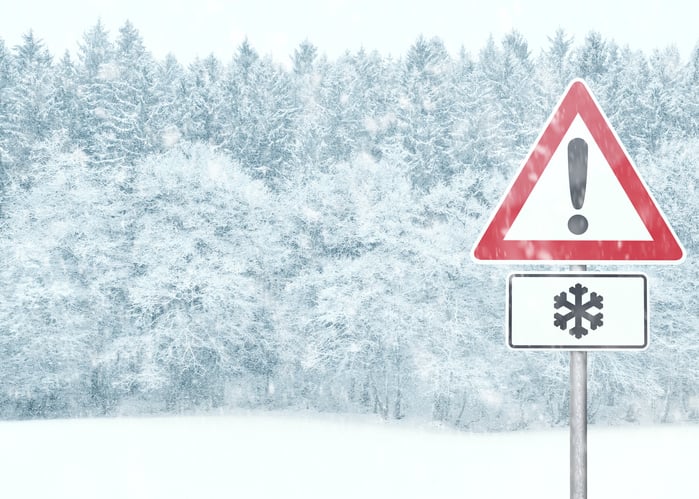Cold Weather Tips

Old man winter is fast approaching, and with it comes sleet, snow, and the unexpected that comes with cold weather. In preparation for the elements, federal agencies such as the Occupational Safety and Health Administration (OSHA) along with state and local partners continue to roll out guidelines to improve worker safety during the winter months. These guidelines may apply more to areas of the country that frequently experience cold weather, such as the Northeast, Mid-Atlantic, Midwest and Pacific Northwest. However, southern regions of the country should be prepared to face temperature differentials due to climate change. While recommendations are extensive, here are the top 5 safety tips for workers bracing for incoming frigid temperatures.
- Understanding Risks – Workers should receive guidance from their employers or supervisors on preventing cold weather-induced illnesses and disease. Inclement weather or dramatic temperature drops can greatly influence the chances of developing hypothermia, frostbite, and trench foot, leading to possible long-term issues. Signs of dangerously cold weather exposure include uncontrolled shivering, slurred speech, clumsiness, fatigue, and confusion. Knowing your risks outside during the winter months is a critical component to protecting yourself from the cold.
- Proper Attire– Cold weather workers should think ahead on their gear by following temperatures on a day-to-day basis. Head-to-toe clothing such as hats, gloves, and a proper coat will reduce workers' chances of becoming ill. Layering sweaters or shirts should also be encouraged so that workers can adjust to conditions as they develop. On days with low temperatures, supervisors and foremen should look to weather forecasts to plan work for the warmest part of the day if possible. Appropriate weather attire will reduce the potential effects of cold-weather illnesses and allow workers to operate with comfort.
- Warm Up– Designating an indoor space to warm up will allow workers to recover from the cold weather and reduce the risk of ill health. Having a warm-up area is particularly important in situations involving precipitation such as rain, sleet, snow that can make temperatures much more frigid.
- Buddy System– Working in pairs is a reliable way to ensure safety. Workers in teams allow one another to recognize the danger signs of cold stress and better safeguard against the elements and their effects. Pairing up is an effective tool used in workplaces, schools and is also seen as a vital safety method for the US military.
- General Wellness– Eating right and keeping healthy through moderate exercise is a core element to braving the cold weather. High nutrient foods comprised of fruits, vegetables, and lean protein such as fish compliment the body’s ability to work at its best. If possible, consuming hot beverages and meals will also enhance the body’s responses to heat up against the weather.
These five safety tips provide a general directive to combat the cold. However, each individual is unique in their needs to handle the climate. As such, workers should dress accordingly to their comfort, plan ahead, keep well, and ask questions about their workplace safety program regarding inclement weather. A full list of OSHA guidelines regarding cold weather can also be found here.
Other Posts You Might Be Interested In
Subscribe to email updates
Stay up-to-date on what's happening at this blog and get additional content about the benefits of subscribing.

